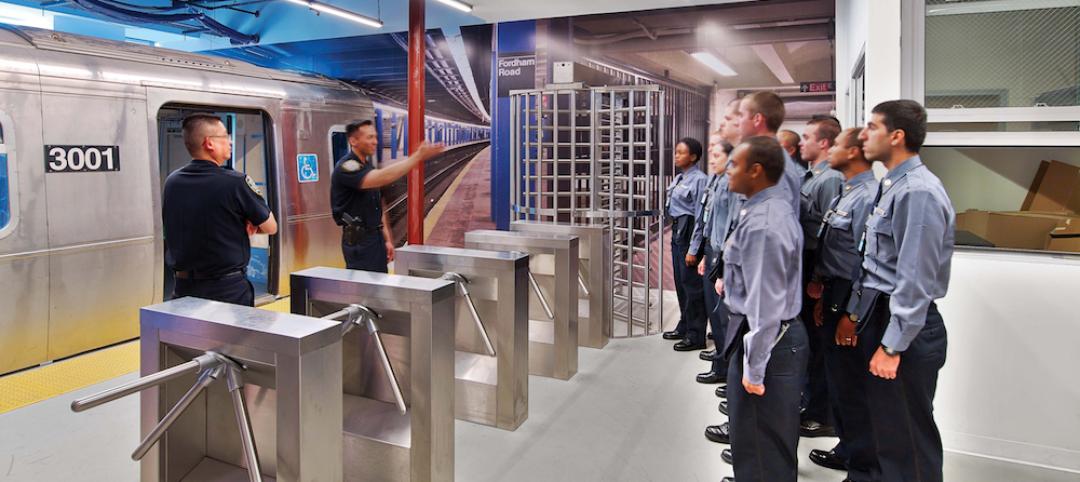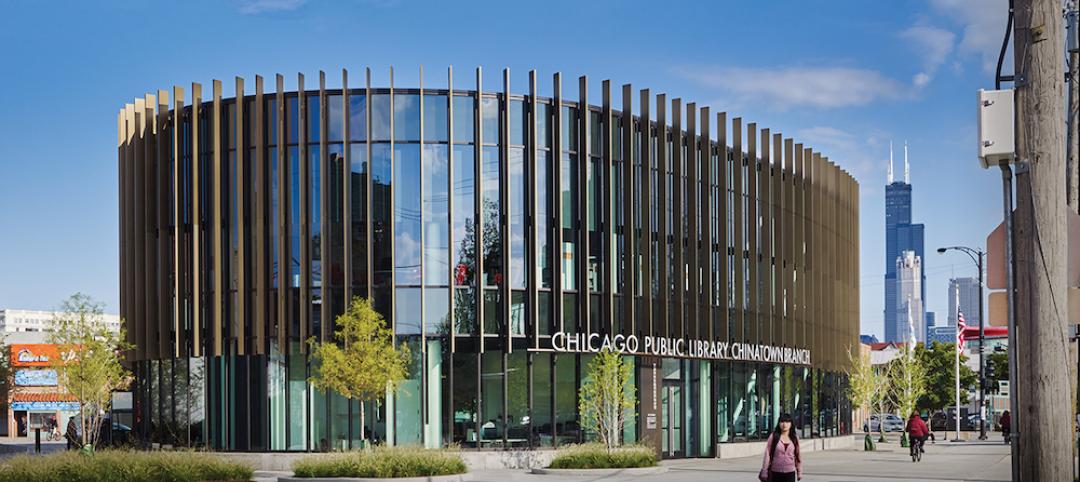In the AEC industry, securing media attention is no longer a niche endeavor but an essential component of a holistic marketing strategy. Strategic media coverage can and will boost your firm’s credibility, underscore impactful messaging about your brand, and ultimately set you apart from your competitors in a highly saturated market.
You attract what you put out into the market. If you’re looking for more of the work that you currently have, then publicize it. If you’re looking to expand into new sectors or geographic locations, you need a strategy that lies above the work you already have.
The first step is to define your vision and develop a way to get there.
What Does Success Mean For You?
Defining who you are as a firm is an important prerequisite of any marketing or publicity strategy. Outline your company’s core values and key differentiators: what sets your team and services apart? This will be invaluable as you develop the messaging underpinning any and all press outreach.
Next, consider where you want to be in the next five to ten years. Ask yourself and your team: what are our growth goals? How do we want to expand in terms of clients, geographic regions, or talent attraction? Identifying these goals will help define a successful PR strategy for you and ultimately create a roadmap for pitching. Everything you set out to pitch should tie back in some way to the goals you set out to achieve.
Identify Your Audience
When outlining a roadmap for achieving your goals, a good place to start is to think critically about your target audiences—potential clients, collaborators, and peers—and which avenues will give you the best chance at reaching them.
These days, there are so many different types of publications—traditional print media, online blogs, podcasts, and even social media channels—and each can bring value to your brand. Take the time to research a variety of publications and evaluate which ones align with the eyes you’d like to reach. Many publications have easily accessible media kits detailing their readership by volume, region, and profession.
Identify Your Hero Projects
While every project might be your darling, some will inevitably stand out among the crowd. Learn how to identify which projects showcase your team’s best work. Get started by organizing all projects in progress and creating an internal tracking system to monitor key milestones. Each milestone, from project win to groundbreaking to topping out, offers a potential touchpoint for media interest.
How you will ultimately communicate about the project is just as important. Take the time to dig deep and uncover the most critical features of your work. Ask yourself: what is the most important story to tell about this project? Why is it relevant now? Organize the themes and potential hooks that will be most compelling for journalists. Then, you can work to craft a narrative that will succinctly yet thoroughly communicate these elements.
It’s All About the Photos
We all have high-tech cameras in our pockets these days, but iPhone photography isn’t going to cut it in this industry. A good photographer is worth the investment. Do your research on specialist photographers in your area—which ones are regularly featured in your target publications?
Experienced AEC photographers will know how to capture your project in the best light. Prepare for the photoshoot to be a full-day (or more!) affair. Your photographer may want to capture certain elements at different hours of the day to account for shifting light levels. Some publications even publish guidelines for what they look for in photography—interior lighting, orientation, etc.
The Art of the Pitch
Editor’s inboxes are overflowing with stunning projects—make sure that the projects you put forward will stand out. This is where all of your preparation comes together. A compelling pitch is equal parts a timely hook and a killer set of photos.
Circle back to the project storylines you identified earlier and use them to draft a thoughtful and succinct pitch. These storylines should always tie back to the growth goals and KPIs that you initially set out to achieve. Offer a teaser of your strongest visuals, while providing a link or an attachment where the editor can review a larger set if they are interested.
Keeping a close eye on the media cycle is key for targeting the right publications and editors. Look at the stories your target has published recently—don’t send a healthcare project to a writer on an education beat. Another strategy is to review a publication’s media kit, identify the themes they will cover in the coming months, and target those editors accordingly.
Timeliness is also key. A project completed in the past few months is much more compelling than one completed in 2005.
Continue the Conversation With Thought Leadership
Project features aren’t the only avenue for media coverage. Elevating the thought leaders in your firm is a great way to further publicize impactful messages about your work, values, and ethos. After you’ve identified the messages that you want to tell about your company and your work, select the key thought leaders in your firm who can help disseminate these ideas. Consider investing in media training workshops for key spokespeople, to arm them with the best strategies for successful interviewing.
Again, make sure that your message is timely. Why do these ideas matter right now? Monitor the conversations happening in the industry and consider how your thought leaders can add a fresh perspective. Additionally, don’t be afraid to join in a conversation even if you don’t currently have the projects to back it up. Many firms are able to break into new markets and sectors by simply positioning themselves as critical thinkers in those areas.
Go Beyond the Placement
So you’ve secured the big placement and landed a project spread in a glossy print magazine, or a Q&A in the local business journal. A common mistake is thinking that your work ends there. How you utilize it moving forward is almost as important as landing the placement.
You can exponentially increase the engagement with your press placement by promoting it across company and personal platforms. Reshare the article through a LinkedIn post or an Instagram story. Create a page on your firm’s website dedicated to showcasing press. If you produce a regular firm newsletter, consider adding a section highlighting recent press placements. You never know what contact-of-a-contact you can reach through the power of a well-marketed press placement.
Publicity as a Strategy for Growth
Effective PR campaigns are built on a solid point of view, an understanding of current events and trends, and a creative approach to communicating timely narratives. Moreover, a robust public relations strategy is essential for business development. These avenues will maximize opportunities to showcase your work and thoughts leaders, reach target audiences with your key messaging, and position your brand for future growth.
Related Stories
Building Team | Jun 2, 2016
Managing risk when building in challenging locations
AEC firms recognize the upsides of exploring new, emerging markets. Whitehorn Financial's Steve Whitehorn offers four principles that can help guide you to success.
Building Team Awards | Jun 1, 2016
Multifamily tower and office building revitalize Philadelphia cathedral
The Philadelphia Episcopal Cathedral capitalizes on hot property to help fund much needed upgrades and programs.
Building Team Awards | Jun 1, 2016
Central utility power plant takes center stage at UC San Diego Jacobs Medical Center
An undulating roof, floor-to-ceiling glass, and façade scheme give visual appeal to a plant that serves the 10-story medical center.
Building Team Awards | May 31, 2016
Gonzaga's new student center is a bustling social hub
Retail mall features, comfortable furniture, and floor-to-ceiling glass add vibrancy to the new John J. Hemmingson Center.
Building Team Awards | May 27, 2016
Big police academy trains thousands of New York's finest
The Police Training Academy in Queens, N.Y., consists of a 480,000-sf academic/administration building and a 240,000-sf physical training facility, linked by an aerial pedestrian bridge.
Building Team Awards | May 26, 2016
Cimpress office complex built during historically brutal Massachusetts winter
Lean construction techniques were used to build 275 Wyman Street during a winter that brought more than 100 inches of snow to suburban Boston.
Building Team Awards | May 25, 2016
New health center campus provides affordable care for thousands of Northern Californians
The 38,000-sf, two-level John & Susan Sobrato Campus in Palo Alto is expected to serve 25,000 patients a year by the end of the decade.
Building Team Awards | May 24, 2016
Los Angeles bus depot squeezes the most from a tight site
The Building Team for the MTA Division 13 Bus Operations and Maintenance Facility fit 12 acres’ worth of programming in a multi-level structure on a 4.8-acre site.
Building Team Awards | May 23, 2016
'Greenest ballpark' proves a winner for St. Paul Saints
Solar arrays, a public art courtyard, and a picnic-friendly “park within a park" make the 7,210-seat CHS Field the first ballpark to meet Minnesota sustainable building standards.
Building Team Awards | May 19, 2016
Chinatown library unites and serves two emerging Chicago neighborhoods
The 16,000-sf, pebble-shaped Chinatown Branch Library was built at the intersection of new and old Chinatown neighborhoods. The goal is for the building to unite the communities and serve as a catalyst for the developing area.
















